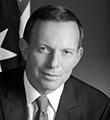The Commonwealth and Queensland governments today released the most comprehensive plan ever developed to secure the health and resilience of the Great Barrier Reef for generations to come.
The Reef 2050 Long Term Sustainability Plan, delivered in partnership between the Commonwealth and Queensland governments, brings together for the first time all the work, expertise and science critical to managing the Reef for the next three decades and beyond.
The historic 35 year plan will secure Australia’s majestic Great Barrier Reef as a place of Outstanding Universal Value on the World Heritage List.
The Plan addresses the challenges the Reef faces now and into the future, and sets clear priorities and targets.
The Plan sets an overarching vision ‘to ensure the Great Barrier Reef continues to improve on its Outstanding Universal Value every decade between now and 2050 to be a natural wonder for each successive generation to come’.
Importantly, it outlines the actions we will all take – government, industry, communities – to ensure the Great Barrier Reef remains healthy and resilient for generations to come.
Commonwealth and Queensland government investment in reef management and protection is projected to be more than $2 billion dollars over the next decade. This is a significant investment and is a testament of our strong, united commitment to the Reef.
The Reef 2050 Long-Term Sustainability Plan will protect the Reef’s Outstanding Universal Value with more than a hundred major actions to support dozens of strong targets, such as:
- Improving water quality by reducing dissolved inorganic nitrogen loads in priority areas by at least 50% by 2018, on the way to achieving an 80% reduction in nitrogen by 2025, and;
- Reducing pesticide loads by at least 60% in priority areas by 2018.
- A net improvement in the condition of natural wetlands and riparian vegetation by 2020.
- Populations of Australian dolphins, dugongs and turtle either stable or increasing by 2020.
- Further protect the Fitzroy Delta including North Curtis Island and Keppel Bay.
Implementation of this plan will be driven by governments, the community, industry, Traditional Owners, and the scientific community.
The Plan not only meets our obligations under the World Heritage Convention – it is a blueprint for protecting the Reef because that is what Australians expect us to do.
The plan categorically addresses the UNESCO World Heritage Committee’s concerns through identified actions, targets, objectives and outcomes across seven key themes – including biodiversity, water quality and ecosystem health.
Together, we
We have worked together with farmers and industry to improve the quality of water entering the Reef catchment, and already we are seeing a positive difference.
We have doubled our efforts to tackle the scourge of crown-of-thorns starfish, and have provided extra protection for turtles and dugongs.
The Great Barrier Reef is an incredibly diverse and rich environment – a maze of 3000 coral reefs and 1050 islands stretching for over 2300 kilometres. It is already regarded as being among the best managed marine parks in the world. We’re determined to keep it that way.
We know that the reef still retains the outstanding values for which it was listed as a World Heritage Property in 1981.
This Reef 2050 Long Term Sustainability Plan delivers the most significant changes in management of the Reef since the Great Barrier Reef Marine Park was established.
Protecting the Reef requires us to work together and we thank the tourism, fishing, agriculture, Indigenous, local government, research, resources, ports and conservation sectors for their significant input and support of the Plan.
Australians are rightfully proud of the Great Barrier Reef and recognise its immense biological, economic and cultural value.
Together, we are committed to protecting it for future generations.
21 March 2015

